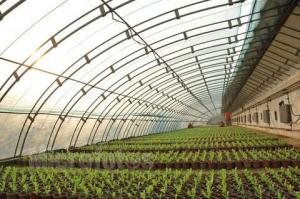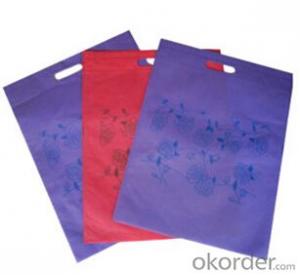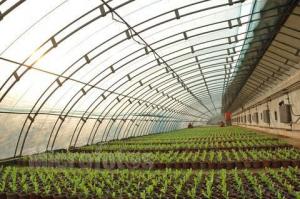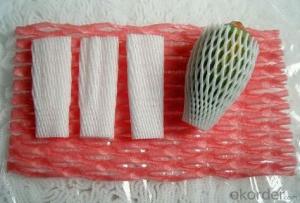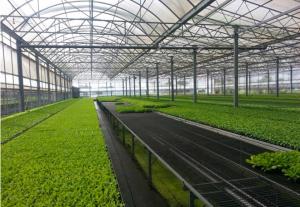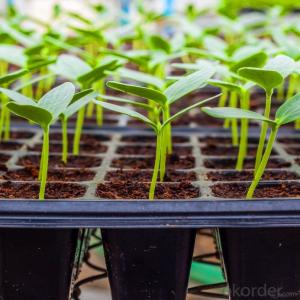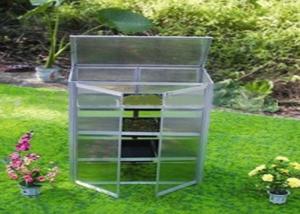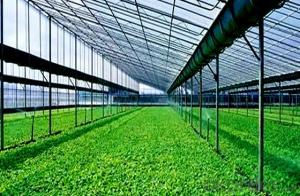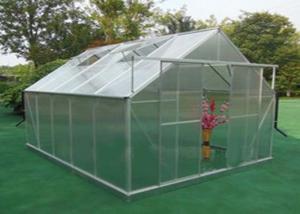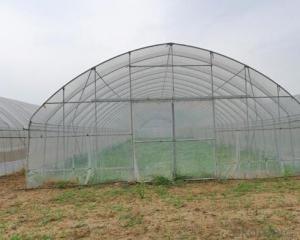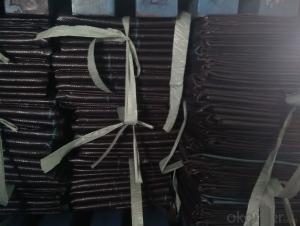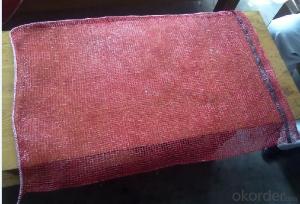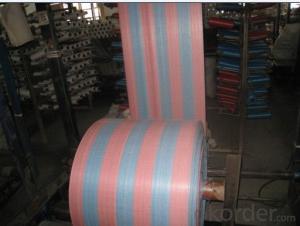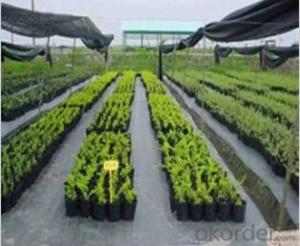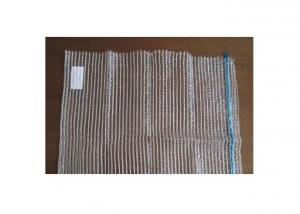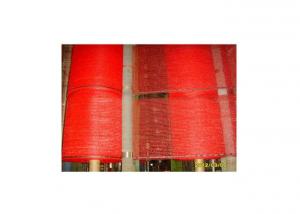The most popular plastic greenhouse for sales
- Loading Port:
- Shanghai
- Payment Terms:
- TT OR LC
- Min Order Qty:
- 10 set
- Supply Capability:
- 1000 set/month
OKorder Service Pledge
OKorder Financial Service
You Might Also Like
Advanta:
Full range and customized of product
Ideal price-quality ratio
Satisfactory service from “A” to ”Z”
True quality guarantee
Polycarbonate greenhouse PC8000/9600Venlo
-Commercial Greenhouses - agricultural greenhouse for flower/vegetable
1.Feature:
Good heat retention, high intensity, easy assembly, energy saving, anti dew, strong impact resistance and long service life, etc
2.Structural Characteristics:
Venlo structure or A shape structure
span: 8m/9.6M/12M, bay size: 3.2M/ 4M, section :4M/ 4.5M;
Gutter: 3-5.5M
The frame works structure is assembled by prefabricated parts. All main parts are hot dipping galvanized after processing with zinc cover 275G/M2 in order to avoid any rust;
Cover: 8mm polycarbonate panel, by special aluminum profiles together with sealed band
Ventilation: single roof vents or double roof vents, controlled by rack and pinion system
Aluminum sliding doors;
- Q: Should dry food ingredients like sugar, coffee powder, tea powder, chilly powder , nuts,flour etc be stored only in food safe plastics ? Or any plastic container is alright? I am concerned about plastic leaching into ingredients, which may cause serious health issues. I know it is not good to store cooked food in non safe plastic containers. But does it hold the same for dry food ingredients also? Clarify please.
- Are you talking about long term food storage, or just daily use type of items? By long term, I mean purchasing the items in bulk, and storing them for several years in your pantry? Then you should always use food grade plastics to put up your food storage. Most common are the food grade five gallon plastic buckets. Never, ever store your food, even in a food grade plastic container on a bare dirt, or cement floor. Despite the buckets being plastic, there IS still air and moisture exchange. Most people do not realize that even though a food product is in plastic that there IS still an exchange of air and moisture with the outside air (even in food grade containers). The only way to prevent this is to use food grade mylar bags and seal your food items before placing them into the food grade plastic buckets, and sealing the buckets. Nuts will only keep 1-2 years, no matter how well you seal them. The oils found in nuts cause them to start going rancid. Coffee and tea also have short shelf lives of 6months-2 years. However you said powder. If your coffee and tea has been freeze dried and turned into powder they will store virtually forever. Always use food grade plastic containers for any type of food storage. You have much less worry though, with dry foods leaching in anything bad from the plastics though. I've had a one gallon plastic container of chilli power sitting properly stored in my pantry for just over six years. I just opened it, smells and tastes as good as anything just purchased. ~Garnet Permaculture homesteading/farming over 20 years
- Q: You know what I'm talking about? The clear plastic in wallets where you slip your ID card in. I've been trying to search for where I can buy some plastic like that but the closest I've come is to buy transparency film and cut them to size. I'm not looking for pouches, just single pieces of the plastic. Is there a proper name for it? I've searched quot;plastic in wallets for IDsquot;, quot;wallet plasticquot;, etc. If you have any info on where I could buy them, I'd love to hear. Thanks.Sorry if this question is in the wrong place. I have no idea where to put it.
- There are two kinds of thin plastic and you have managed to crisscross your description to make it unclear what you want. The harder plastic that is used on the laminating things is polyester (as it says in the description) and you should be able to find sheets of it at office supply stores in the form of dividers for folders and sheet protectors for reports. The softer plastic that is used for the kind of wallet I carry where there is a Z fold of pockets to put 2-4 ID cards - 2 showing - is polyethylene plastic and you should be able to find it in various thicknesses at hardware stores and home centers where it is sold by the foot several feet wide off of rolls to make temporary windows to cover screens in winter or to make green houses/hot beds for plants for one season.
- Q: I only know that -plastic doesn't decompose well and thus takes up unnessary space in landfill sites-burning plastic releases toxic fumes-plastic is harmful to animalsI can't think of anything else...please help me!!! )=
- Negative_health_effects good luck and remember to site you sources. :)
- Q: Are nursery trays suitable for starting ornamental grasses?
- Yes, nursery trays are suitable for starting ornamental grasses. Nursery trays provide a controlled environment for seed germination and early growth, allowing for easier transplanting once the grasses have established strong roots. Additionally, the individual compartments in nursery trays help prevent root entanglement and allow for better root development.
- Q: How are plastic pesticide containers safely disposed of?
- Plastic pesticide containers are safely disposed of by following specific guidelines. The containers should be thoroughly rinsed with water to remove any pesticide residue. The rinsed containers can then be punctured or crushed to prevent reuse and ensure they are non-hazardous. These treated containers can be either recycled or disposed of in accordance with local regulations, such as taking them to designated collection centers or hazardous waste facilities. It is important to always refer to the instructions provided by the manufacturer and follow any specific disposal recommendations.
- Q: I'm 16 would anyof u teens get plastic now? If so what?I had a tummy tuck!
- I used to want plastic surgery, but then i grew up, and realized how pointless it was. if you want to loose weight, excersice, and eat healthy, dont go get your fat removed. When you get a surgery like a tummy tuck, or liposuction, the fat cells are removed, but not all of them, so if you don't change your eating and excerising habbits, the remaining wi grow, and you'l be just as fat as you were before.
- Q: Can nursery trays be used for grapevine propagation?
- Yes, nursery trays can be used for grapevine propagation. Nursery trays provide a suitable environment for starting grapevine cuttings and allow for easy monitoring and management of the propagation process.
- Q: How do I choose ground cover for a shady slope?
- When choosing ground cover for a shady slope, it is important to consider plants that thrive in low light conditions. Look for shade-loving varieties such as mosses, ferns, hostas, ajuga, or vinca. These plants have adapted to grow in shaded areas and can provide excellent coverage and erosion control on a slope. Additionally, consider the soil type and moisture levels, as some ground covers may prefer well-drained soil while others can tolerate moist conditions. Ultimately, select ground cover plants that are suitable for shade, can withstand the slope's conditions, and meet your aesthetic preferences.
- Q: We realise that plastics, being non-biodegradable, are an environmental hazard. Hoever, while discussing the choking of sewage drains by plastics
- Well, a lot of people are recycling plastics. Maybe not enough, but more then the environmentalists are giving us credit for.
- Q: Do nursery trays come with a light source attachment?
- No, nursery trays typically do not come with a light source attachment.
Send your message to us
The most popular plastic greenhouse for sales
- Loading Port:
- Shanghai
- Payment Terms:
- TT OR LC
- Min Order Qty:
- 10 set
- Supply Capability:
- 1000 set/month
OKorder Service Pledge
OKorder Financial Service
Similar products
Hot products
Hot Searches
Related keywords
